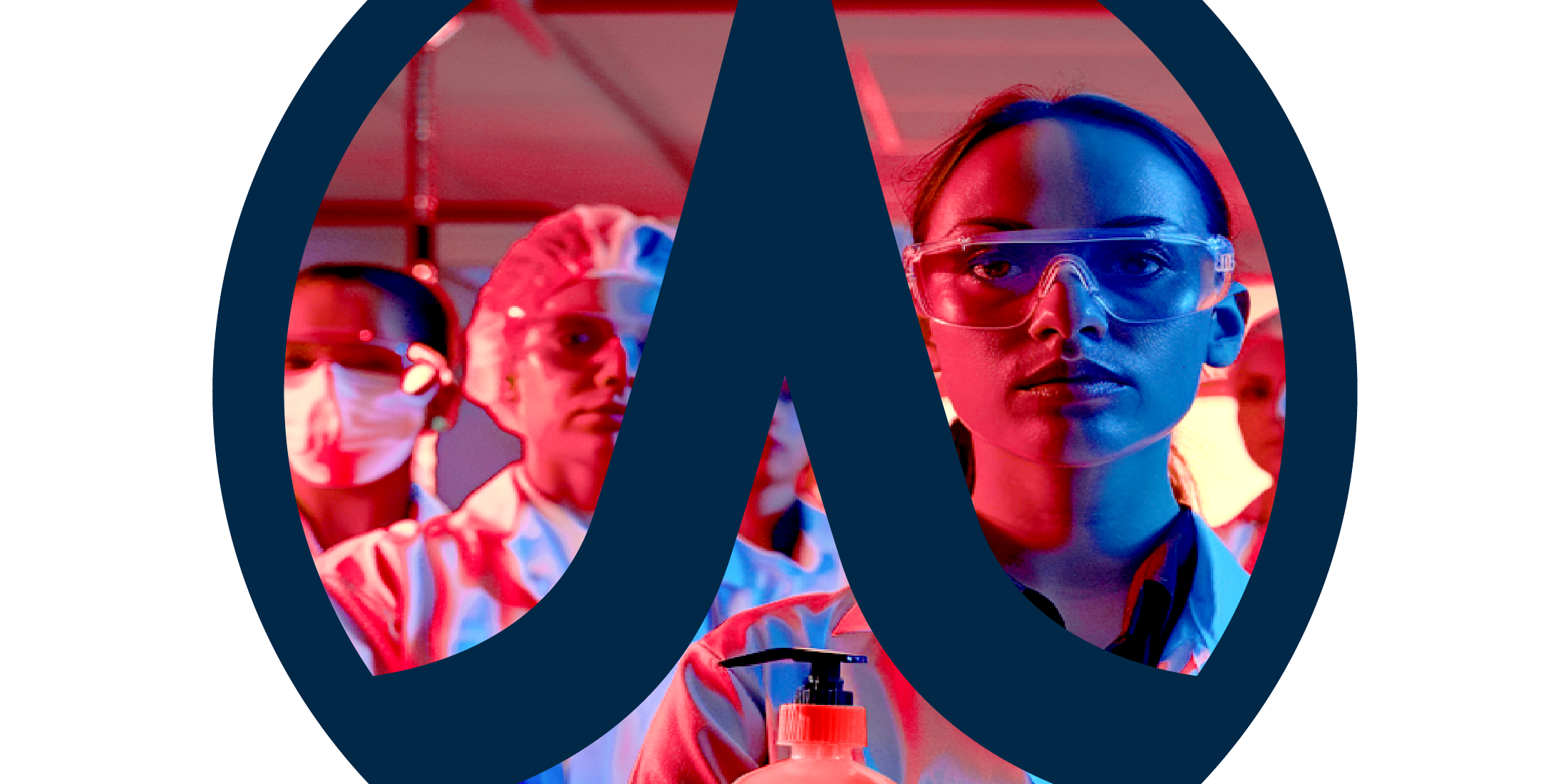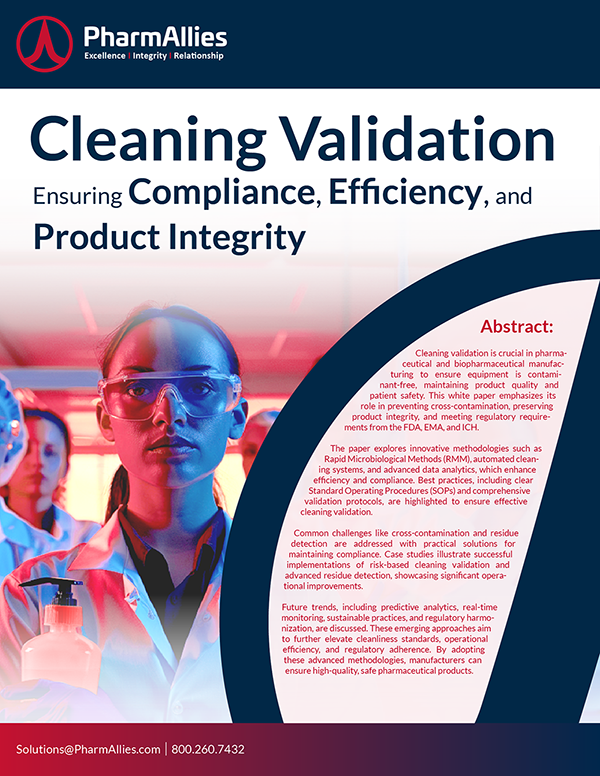Cutting-Edge Approaches in Pharma and Biotech Cleaning Validation
Introduction
Cleaning validation is a critical component in the pharmaceutical and biotechnological industries, ensuring that manufacturing processes meet rigorous standards for safety, efficacy, and quality. As regulatory requirements become increasingly stringent, innovative methodologies in cleaning validation are paramount for maintaining compliance and optimizing production processes. This article explores the latest advancements and methodologies that are reshaping the landscape of cleaning validation.
Cleaning validation is a documented process that provides high levels of assurance that cleaning procedures effectively remove residues to predetermined levels of acceptability. It ensures that there is no risk of cross-contamination that could impact product quality and patient safety. Traditional methods of cleaning validation often rely on manual sampling and offline analysis, which can be time-consuming and prone to human error. However, advancements in technology and methodology are driving a shift towards more efficient, accurate, and automated approaches.
Emerging Trends in Cleaning Validation
Automated Cleaning Systems
Automated cleaning systems, such as Clean-In-Place (CIP) and Clean-Out-of-Place (COP), are becoming increasingly prevalent. These systems standardize cleaning processes, reduce manual intervention, and enhance reproducibility. CIP systems, in particular, are designed to clean the interior surfaces of equipment without disassembly, which minimizes downtime and increases production efficiency.
Advantages of Automated Cleaning Systems:
-
Consistency and reproducibility in cleaning
-
Reduced risk of human error
-
Improved documentation and traceability
Rapid Microbiological Methods (RMM)
Traditional microbiological testing methods can take several days to yield results, delaying the validation process. Rapid Microbiological Methods (RMM) offer faster and often more sensitive detection of microbial contamination. Techniques such as ATP bioluminescence, real-time PCR, and flow cytometry allow for near-instantaneous results, facilitating quicker decision-making and reducing production hold times.
Advantages of Rapid Microbiological Methods (RMM):
-
Reduced testing time
-
Increased sensitivity and accuracy
-
Early detection of contamination
Analytical Method Advancements
The development of more sophisticated analytical methods is enhancing the ability to detect and quantify residues with greater accuracy. High-Performance Liquid Chromatography (HPLC), Mass Spectrometry (MS), and Total Organic Carbon (TOC) analysis are some of the advanced techniques used to ensure thorough cleaning validation.
Advantages of Analytical Method Advancements:
-
Enhanced detection limits
-
Greater specificity and sensitivity
-
Comprehensive residue profiling
Process Analytical Technology (PAT) and Real-Time Monitoring
Process Analytical Technology (PAT) is a system for designing, analyzing, and controlling manufacturing processes through timely measurements of critical quality parameters. In cleaning validation, PAT enables real-time monitoring and control, ensuring that cleaning processes meet predefined criteria
Implementation of PAT in Cleaning Validation
The implementation of PAT in cleaning validation involves integrating sensors, analyzers, and data acquisition systems into the cleaning process. This allows for continuous monitoring and immediate adjustments if any deviations are detected. Techniques such as Near-Infrared Spectroscopy (NIR) and Raman Spectroscopy are commonly used in PAT because they can provide real-time data on residue levels.
Advantages of Implementation of PAT in Cleaning Validation:
-
Real-time data acquisition and analysis
-
Immediate process control and adjustments
-
Reduction in cleaning cycle times and resource use
Enhanced Data Management and Analytics
Data management and analytics play a crucial role in modern cleaning validation. Advanced software solutions enable the collection, storage, and analysis of large volumes of data generated during cleaning processes. These systems can perform trend analysis, identify patterns, and predict potential issues before they become critical, thus ensuring consistent cleaning performance.
Advantages of Enhanced Data Management and Analytics:
-
Comprehensive data analysis and reporting
-
Predictive maintenance and process optimization
-
Improved compliance with regulatory requirements
Risk-Based Approaches to Cleaning Validation
A risk-based approach to cleaning validation focuses on identifying and mitigating risks associated with cleaning processes. This methodology aligns with the principles of Quality by Design (QbD), emphasizing the importance of understanding processes and controlling them based on scientific knowledge and risk management.
Risk Assessment Tools
Risk assessment tools, such as Failure Modes and Effects Analysis (FMEA) and Hazard Analysis and Critical Control Points (HACCP), are employed to systematically evaluate potential risks in cleaning processes. These tools help prioritize areas that require stringent control and monitoring, ensuring resources are effectively allocated.
Advantages of Risk Assessment Tools:
-
Systematic identification and mitigation of risks
-
Enhanced focus on critical control points
-
Improved overall process reliability
Setting Acceptable Limits
Determining acceptable limits for residues involves a thorough understanding of the manufacturing process and the properties of both the product and the cleaning agents used. Health-based exposure limits, such as Acceptable Daily Exposure (ADE) and Permitted Daily Exposure (PDE), are calculated to ensure that residual levels are safe for patients.
Advantages of Setting Acceptable Limits:
-
Scientifically justified residue limits
-
Assurance of patient safety
-
Compliance with global regulatory standards
Innovations in Sampling and Detection Techniques
Sampling and detection are critical components of cleaning validation. Innovations in these areas are driving improvements in accuracy, sensitivity, and efficiency.
Automated Sampling Systems
Automated sampling systems reduce the variability associated with manual sampling. These systems can be programmed to collect samples at specific intervals, ensuring consistent and representative sampling. Automated systems also reduce the risk of contamination during the sampling process.
Advantages of Automated Sampling Systems:
-
Consistent and accurate sampling
-
Reduced risk of contamination
-
Increased efficiency and throughput
Advanced Detection Technologies
New detection technologies are enabling more sensitive and specific identification of residues. Technologies such as Surface Enhanced Raman Spectroscopy (SERS) and Liquid Chromatography-Mass Spectrometry (LC-MS) provide enhanced detection capabilities, allowing for the identification of even trace amounts of contaminants.
Advantages of Advanced Detection Technologies:
-
Higher sensitivity and specificity
-
Ability to detect a wide range of contaminants
-
Faster and more reliable results
Continuous Improvement and Regulatory Compliance
Continuous improvement is a fundamental aspect of effective cleaning validation. By adopting innovative methodologies, companies can not only meet regulatory requirements but also enhance their overall operational efficiency and product quality.
Continuous Process Verification (CPV)
Continuous Process Verification (CPV) involves ongoing monitoring and control of cleaning processes throughout the product lifecycle. This approach ensures that cleaning processes remain in a state of control, providing continuous assurance of product quality and compliance.
Advantages of Continuous Process Verification (CPV):
-
Ongoing assurance of cleaning effectiveness
-
Early detection of process deviations
-
Enhanced regulatory compliance
Regulatory Guidance and Standards
Regulatory agencies, such as the FDA and EMA, provide guidance and standards for cleaning validation. Staying abreast of these guidelines and incorporating them into cleaning validation practices is essential for compliance. Innovative methodologies can help companies not only meet but exceed these regulatory expectations.
Advantages of Regulatory Guidance and Standards:
-
Alignment with current regulatory expectations
-
Enhanced reputation and trust with regulatory bodies
-
Reduced risk of non-compliance



